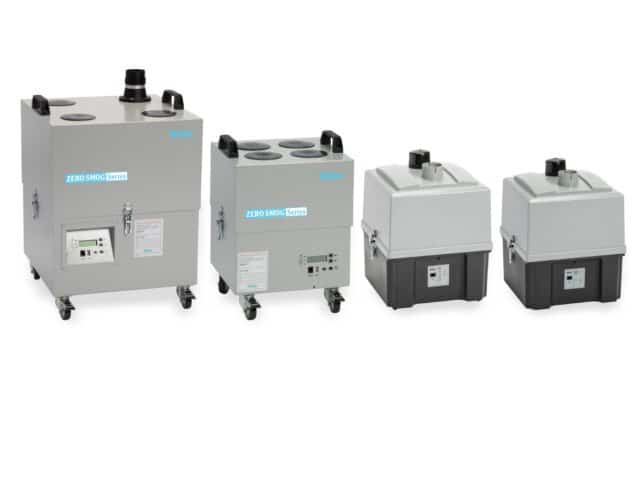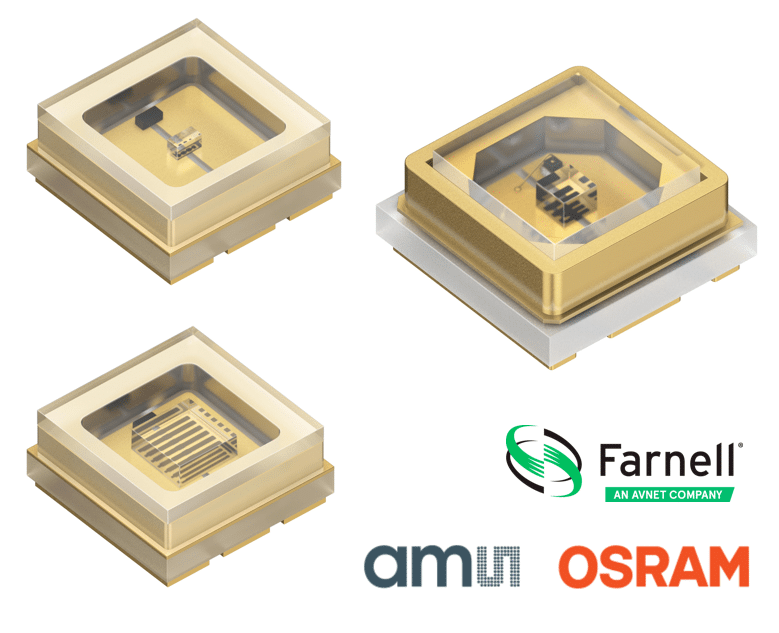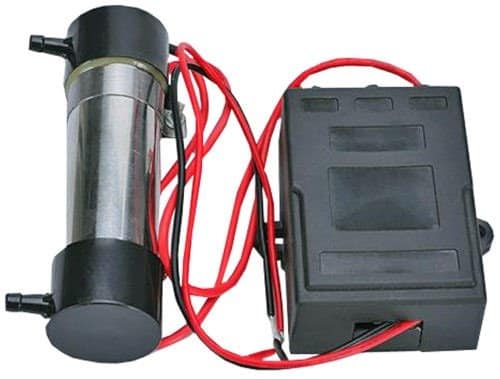The issue of suction has always been a point of attention in the world of welding, whether manual or automatic, since it concerns the health of the operators and the healthiness of the work environment.
Without prejudice to health, which is the main objective, it must not be forgotten that gases and dust impair the proper functioning of machines and, in particular, optics.
In the last year and a half, we have all become more sensitive to the issue of "clean air": in times of Covid-19 and during the various phases of the pandemic, at a global level, guaranteeing a healthy work environment was not only desirable, but also which has become essential.
Weller fume extraction and filtration systems are designed to make the breathable air in the workplace healthier by removing harmful substances, predominantly contaminated by dust, micro-dust and gases generated by multiple processes (welding and gluing rework, solvents, resins, MEK, VOC…), of the areas covered by the suction arms (hoses, tubes/arms or hoods). Although 100% efficiency against nano-molecular viruses such as the Coronavirus (0,12 µm) cannot be guaranteed, the HEPA H13 filters with which many Weller smoke extraction systems are equipped significantly reduce the presence of these airborne molecules (efficiency ≥ 99,955 in MPPS for 0,16 µm particles up to 99,994 for 0,3 µm particles).
Guaranteeing greater air purity in the work areas of the operators will undoubtedly improve their comfort and eliminate the risk of eventual lung irritation or allergic reactions caused by the vapors, which can weaken the body and the immune system, making it more susceptible. to possible infections, as well as exposing it to known and serious pathologies
A wide range of filter units
Weller filters are available in a variety of types and classes, because they are not only developed for welding applications (although for Weller this is the main reason), but also for many other applications, such as bonding, varnishing, fluxing, marking and engraving, welding and laser cutting, also for medical and cosmetic applications, for the dermo-aesthetic sector and many more.
Weller's filtration process begins with a pre-filter that is a classic M5 or F7 class fabric filter, whose main function is to block micro-dust, pollen, bacteria and pigments whose dimensions range between 10 and 5 µm and prevent clogging. of the main or compact filter that is more expensive and efficient. For applications with high dust content, sticky residues or with the possibility of stray sparks, there are several specific filters (with bag, multi-bag, metal…) available to optimize the efficiency and durability of the filtration system.
The compact filter
The compact filter is the most important part of the filter system, because it blocks the particles that have not been intercepted in the pre-filter and the harmful gases that are difficult to filter. It is available in HEPA (High Efficiency Particulate Air filter) class, H13 (very high efficiency class, also called “absolute filter”. It is also available in other classes for “broad spectrum” applications, gluing, fluxing, cleanroom ), for MEK (Methyl Ethil Ketone), solvents, VOC (Volatile Organic Compounds).Depending on the selected unit, the dimensions of the filter and therefore also its capacity and duration vary, but it is considered that the maximum duration is always 12 months from the first use This is because inside there are two different types of filtering: one "mechanical" by means of activated carbon, which manages to trap micro-dust (≥ 40 g / mol) thanks to its porosity; the other “chemical“, by means of potassium permanganate that once it is crossed by micro-dust and noxious gases (of lower molecular mass), it oxidizes, trapping them inside.
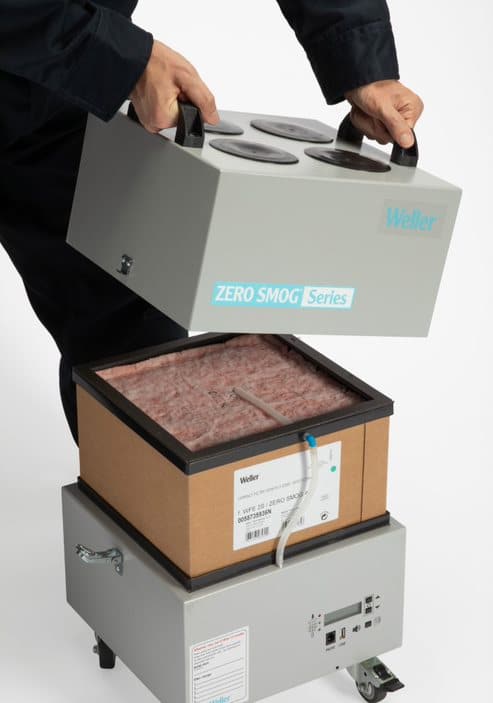
Precisely this last phenomenon, once activated, that is to say, from the first use, ceases only when there are no more materials to be eliminated with this reaction. The storage time does not influence, until forced air passes through the inside of the filter. nothing happens. It is important to underline that the more the filter unit is used and the less the pre-filter is cared for, the less the compact filter will last.
Most Weller filtration units have a warning system for when the saturation of the filters is reached, thanks to which it will be possible to proceed to the timely replacement of the pre-filter as well as to be able to look at replacing the main one at the end of 12 months and not before. If, after changing the pre-filter, the alarm remains active, it is a sign that the main filter must also be replaced.
Thanks to the high efficiency of the filters and the system that warns when they are no longer efficient, Weller units have the advantage of recirculating the filtered, and therefore purified, air in the work area, at room temperature, avoiding the loss of air conditioning (in summer) and heating (in winter); but some versions have the option of being able to bring filtered air to the outside, if this is the company's decision.
Punctual suction and volumetric suction
The units in the catalog allow you to choose two types of philosophy of use: "point suction" that is done by means of a 6 or 8 mm tube, and "volumetric suction" with arms of 32 or 60 mm in diameter. In the first case, they are high pressure systems, not influenced by the length of the connection tube, it is used in applications with a high presence of flux, this method generally requires more maintenance to avoid the obstruction of the silicone suction tubes and metal.
The second typology uses a high volume of air at low pressure, and is the most popular option for manual applications (welding and rework in electronics, jewelry, plastics…), as well as in automated applications (laser machines, welding lines, furnaces, gluing cells, CNC, etc.) Weller volumetric extraction equipment requires minimal maintenance, is easy to install, transportable, has a low noise level and low impact in the work area.
In addition to the applications mentioned above, Weller offers solutions in other specific fields: a Laser Line (for connection to laser marking, cutting, engraving or welding machines); Beauty Line (for manicures or dermo-aesthetic laser), and Radon (to rehabilitate the basements of buildings with the presence of this type of highly harmful gas in the subsoil).
As complements there is a wide range of accessories: in addition to the aforementioned and extremely important filters, Weller has a wide catalog where you can find various types of arms of different lengths and diameters, hoods and nozzles, hoses, connectors and adapters for installation. , cabinets, hoods and much more.
One of Weller's exclusive accessories is the WFV60A, the “motorized butterfly valve”, which allows automated opening and closing thanks to the possibility of communication with other Weller WX units or with PLC/PC, using a serial connection. This accessory, in combination with Weller units equipped with CFC (Constant Flow Control) allows the automatic regulation of the turbine speed based on how many arms/valves are connected and active, increasing or decreasing the rotation of the motor when opening or closing an arm, to the car off when all are closed. This results in a quieter system, lower power consumption and longer filter life.
All Weller systems are CE approved and the accessories that are mounted on the work table, in addition to the soldering stations, are ESD, therefore they can also be used in EPA (ESD Protected Area) areas.
For high-end units, a free software is also available, Weller FT Monitor, thanks to which you can configure the parameters of the unit by means of a computer or USB key, or carry out checks for ISO purposes (time and status of the filters and sealing of the system).
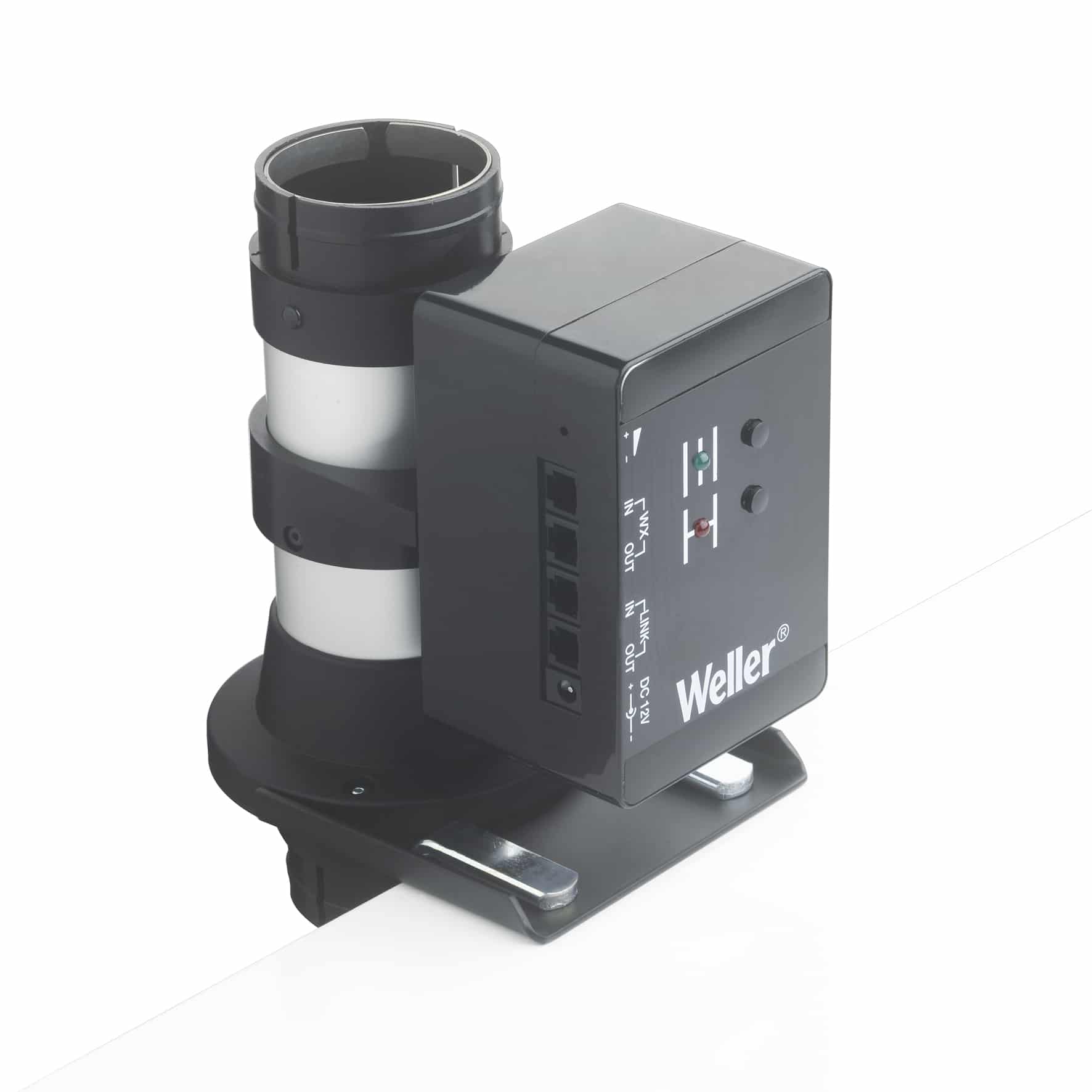
In conclusion, most of the available filtration units can communicate with Weller soldering stations, so that they allow to manage automatic on/off and automatic speed regulation, or with any other automation that communicates with serial protocol. .
By guaranteeing greater air purity in the work area, operator comfort is improved and the risk of lung irritation or allergic reactions caused by gas exhalation is eliminated. This can weaken the body and the immune system, making it more sensitive to eventual contagion.


